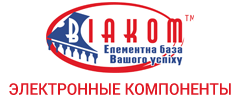Збирач потоків
Rohde & Schwarz receives VESA approval for DisplayPort testing solutions
Rohde & Schwarz test solutions have been officially approved by the Video Electronics Standards Association (VESA) for testing DisplayPort technology. This achievement reinforces the company’s commitment to delivering high-quality solutions for testing of the physical layer compliant with various industry standards.
VESA has officially approved the test solutions from Rohde & Schwarz for DisplayPort 2.1 (HBR X) transmitter testing, providing manufacturers a toolset to validate their DP2.1 (HBR X) transmitters with confidence. This test solution is based on the R&S RTP oscilloscope and R&S ScopeSuite test automation software.
Additionally, Rohde & Schwarz vector network analyzers have been approved for DisplayPort cable/connector testing, supporting various data rates including DP80 (UHBR20), DP54 (UHBR13.5 and UHBR10), and DP8k (HBR3). The brand-new R&S ZNB3000 with its exceptional measurement speed is an ideal fit for this application and reduces the test time significantly. The R&S ZNBT multiport VNA and other vector network analyzers from Rohde & Schwarz are capable of performing this task, as well.
Beyond VESA-approved testing, the Rohde & Schwarz solutions also seamlessly integrate Embedded DisplayPort (eDP) transmitter testing, providing design engineers with a unified platform for comprehensive DisplayPort technology evaluation. This integrated approach enables manufacturers to efficiently test and optimize eDP transmitters utilizing the R&S RTP and R&S ScopeSuite solution.
Patrick McKenzie, Technology Manager, at Rohde & Schwarz, said: “We’re pleased to receive VESA’s approval for our DisplayPort testing solutions. This confirms our commitment to precise and reliable test tools for the evolving display technology landscape. Our solutions empower our customers develop innovative DisplayPort products quickly and efficiently, while meeting industry standards.”
The post Rohde & Schwarz receives VESA approval for DisplayPort testing solutions appeared first on ELE Times.
Microchip Unveils New High-Density Power Module for AI at the Edge Applications
The MCPF1412 power module with integrated I2C and PMBus interfaces for flexible configuration and monitoring
AI at the edge is driving increased integration and power consumption, requiring advanced power management solutions for industrial automation and data center applications. Microchip Technology announced the MCPF1412, a highly efficient and fully integrated point-of-load 12A power module with a 16V VIN buck converter and support for I2C and PMBus interfaces.
The MCPF1412 power module is designed to deliver superior performance and reliability, ensuring efficient power conversion and reduced energy loss. Its compact form factor of 5.8 mm × 4.9 mm × 1.6 mm and innovative Land Grid Array package significantly reduce the required board space by over 40% compared to traditional discrete solutions. This reduction in size, coupled with enhanced reliability and minimized PCB switching and RF noise, positions the MCPF1412 as a leading industry device.
“The MCPF1412 is highly compatible with our FPGAs and PCIe solutions, providing a comprehensive solution for Microchip customers,” said Rudy Jaramillo, vice president of Microchip’s analog power interface division. “This innovative solution minimizes space usage by reducing chip placements when combined with other Microchip devices.”
The MCPF1412M06 is a versatile device that offers significant flexibility for configuration and system monitoring through the I2C and PMBus interfaces. Additionally, it supports standalone operation without a digital interface, allowing designers to easily configure output voltages using simple resistor divider adjustments and monitor the system via the Power Good output.
Other key features of the MCPF1412 include multiple diagnostic functions such as over-temperature, over-current and over-voltage protection for improved performance and reliability. The operating temperature range is TJ −40°C to +125°C. An on-board embedded EEPROM is available for programming the default power-up configuration.
Microchip offers a wide range of DC-DC power modules with input voltages from 5.5-70V, available in ultra-compact, rugged and thermally enhanced packaging to improve high power density.
The post Microchip Unveils New High-Density Power Module for AI at the Edge Applications appeared first on ELE Times.
Semikron Danfoss’ module with ROHM’s latest 2kV SiC MOSFETs integrated into SMA’s large-scale solar system
XENSIV 4th generation of magnetic switches supports functional safety up to ASIL B in automotive applications
When developing applications for autonomous driving, compliance with the ISO 26262 standard is crucial – at both the system and sensor levels. To meet these demands, Infineon Technologies AG introduces the XENSIV TLE4960x magnetic switch family. Developed in accordance with ISO 26262, the TLE4960x switches integrate diagnostic functions to support functional safety applications with requirements up to ASIL B. They are the only ASIL-B-compliant switches on the market that can address a wide range of automotive applications, including window regulators, sunroof actuators, and seat adjustment. In addition, the devices are AEC-Q100 compliant and qualified to Grade 0, ensuring robust performance in harsh environments.
The TLE4960x devices are designed to measure the magnetic field orthogonal to the printed circuit board in the Z-direction and feature an open-drain output for speed information. They also include integrated overcurrent and overtemperature protection. Housed in a standardized SOT23-3 SMD package, the sensors require only 1.6 mA and operate across an extended temperature range from -40°C to 175°C. Their excellent temperature stability makes them ideal for harsh automotive environments.
The post XENSIV 4th generation of magnetic switches supports functional safety up to ASIL B in automotive applications appeared first on ELE Times.
The advent of recyclable materials for PCBs

Conventional PCB manufacturing—which is wasteful, energy intensive, and harmful to the environment—increasingly calls for electronics recycling to reduce material waste and energy requirements through less material production.

Figure 1 The conventional PCB world is ripe with recycling opportunities. Source: IDTechEx
IDTechEx’s new report, “Sustainable Electronics and Semiconductor Manufacturing 2025-2035: Players, Markets, Forecasts,” outlines new recyclable materials for PCBs and provides updates on their full-scale commercial readiness. Below is a sneak peek at these recyclable and biodegradable materials and how they facilitate sustainability in electronics manufacturing.
- New PCB substrates
While FR4, a glass-reinforced epoxy resin laminate, is a substrate of choice for PCBs due to being lightweight, strong, and cheap, it’s non-recyclable and can contain toxic halogenated flame retardants. That calls for alternative substrates that are biodegradable or recyclable.
Jiva’s Soluboard, a biodegradable substrate made from the natural fiber flax and jute, is emerging as a promising new material as it dissolves in 90°C water. That facilitates component recycling and precious metal recovery at the product’s end of life. Companies like Infineon, Jaguar, and Microsoft are currently testing if this new material can combat rising electronics waste levels.

Figure 2 Soluboard is a fully recyclable and biodegradable PCB substrate. Source: Jiva Materials
- Polylactic acid in flexible PCBs
Conventional flexible PCBs, built around plastic polyimide, are also ripe for alternative materials. Polylactic acid, currently in the prototype-scale validation phase, emerges as a sustainable material that can be sourced from organic industrial waste and is also biodegradable.
Polylactic acid can withstand temperatures of up to 140°C, which is lower than that of polyimide and FR4. However, it’s compatible with manufacturing processes such as silver ink sintering. Companies and research institutes like VTT are now demonstrating the potential of polylactic acid in flexible PCBs.
- Recycled tin
Around 180,000 tonnes of primary tin are used in electronics globally. It’s primarily sourced from mines in China, Indonesia and Myanmar and is causing significant environmental damage. Enter recycled tin, which is produced by smelting waste metal and metal oxide. It boasts the same quality as primary tin, which is confirmed by X-ray diffraction.
However, merely 30% of tin is currently recycled worldwide, so there is a greater need for regulatory drivers to encourage increased metal recycling. One example is Germany’s National Circular Economy Strategy (NKWS) unveiled in 2024, aiming to half per capita raw material consumption by 2045.

Figure 3 A boost in recycled tin relies on a strong regulatory push. Source: Mayerhofer Electronik
Mayerhofer Electronik was the first to demonstrate the use of recycled tin for soldering in its electronics manufacturing processes. Now, Apple has committed to using secondary tin in all products by 2035.
- Regeneration systems to minimize copper waste
It’s a widely known fact that copper is used wastefully in PCBs. This is how it happens: a flat sheet of copper is applied to the substrate before holes are drilled. Inevitably, a circuit pattern produced by etching away the excess copper requires large volumes of chemical etchants like ferric (III) chloride and cupric (II) chloride. As a result, around 70% of the copper initially applied to the board is often removed.
Here, additive manufacturing, in which copper is only applied where required, offers the solution in a method that requires no manufacturing switch. An etchant regeneration system recovers both copper etched from the laminate and etchant chemicals. The recycled copper can serve as an additional revenue stream for the electronics manufacturer.
Related Content
- The problem with recycling
- PCB materials: Recycle, reuse, dispose?
- Trends and Challenges in PCB Manufacturing
- Process for recycling turns up components ready for reuse
The post The advent of recyclable materials for PCBs appeared first on EDN.
Гідні умови праці та кар'єрне зростання пропонує НАЕК "Енергоатом"
Топменеджери атомної енергетичної галузі в середині березня завітали до НН ІАТЕ, відвідали лабораторії та науково-дослідний центр, ознайомилися з інноваційними підходами до навчання, зустрілися зі студентами, науковими й науково-педагогічними працівниками Інституту та обговорили важливість підготовки висококваліфікованих спеціалістів для енергетичної галузі. Фахівці з персоналу АТ НАЕК "Енергоатом" відзначили високий рівень знань і затребуваність випускників КПІ ім. Ігоря Сікорського.
Утвердження гендерної рівності: крок за кроком
Газета "Київський політехнік" вже розповідала про основні засади, покладені в основу Плану дій з імплементації принципів гендерної рівності в практику діяльності КПІ, затвердженого наказом ректора від 3 жовтня 2024 року. Наприкінці березня відбулося розширене засідання робочої групи з питань гендерної рівності КПІ ім. Ігоря Сікорського, участь у якому окрім її членів взяли представники низки підрозділів і ректор університету Анатолій Мельниченко.
Звіт голови Профспілкового комітету КПІ ім.Ігоря Сікорського Юрія Веремійчука про виконання Колективного договору за період з квітня 2024 до квітня 2025 р.
Шановні делегати Конференції трудового колективу, працівники та здобувачі вищої освіти університету, запрошені!






